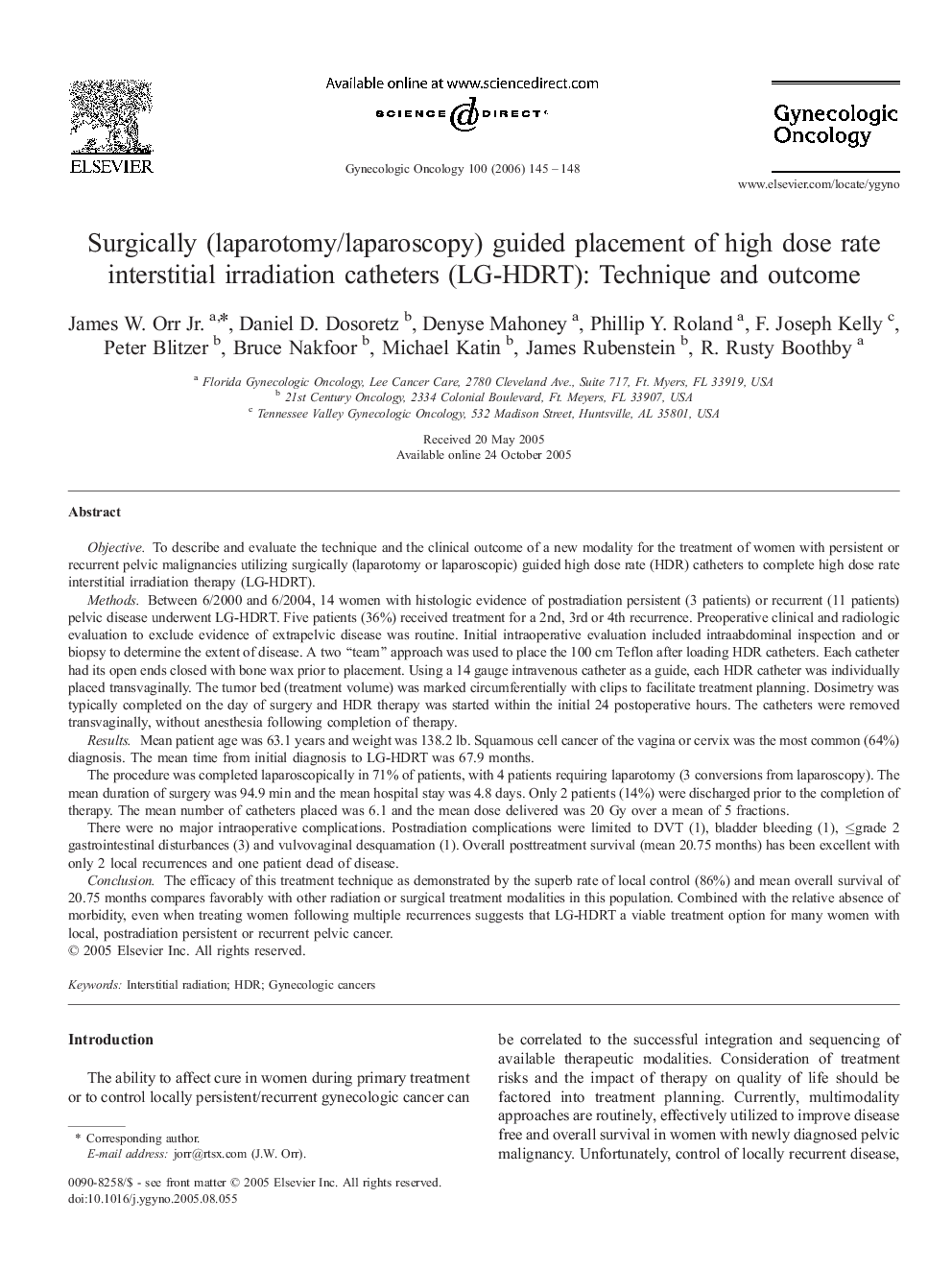| کد مقاله | کد نشریه | سال انتشار | مقاله انگلیسی | نسخه تمام متن |
|---|---|---|---|---|
| 3947897 | 1254488 | 2006 | 4 صفحه PDF | دانلود رایگان |

Objective.To describe and evaluate the technique and the clinical outcome of a new modality for the treatment of women with persistent or recurrent pelvic malignancies utilizing surgically (laparotomy or laparoscopic) guided high dose rate (HDR) catheters to complete high dose rate interstitial irradiation therapy (LG-HDRT).Methods.Between 6/2000 and 6/2004, 14 women with histologic evidence of postradiation persistent (3 patients) or recurrent (11 patients) pelvic disease underwent LG-HDRT. Five patients (36%) received treatment for a 2nd, 3rd or 4th recurrence. Preoperative clinical and radiologic evaluation to exclude evidence of extrapelvic disease was routine. Initial intraoperative evaluation included intraabdominal inspection and or biopsy to determine the extent of disease. A two “team” approach was used to place the 100 cm Teflon after loading HDR catheters. Each catheter had its open ends closed with bone wax prior to placement. Using a 14 gauge intravenous catheter as a guide, each HDR catheter was individually placed transvaginally. The tumor bed (treatment volume) was marked circumferentially with clips to facilitate treatment planning. Dosimetry was typically completed on the day of surgery and HDR therapy was started within the initial 24 postoperative hours. The catheters were removed transvaginally, without anesthesia following completion of therapy.Results.Mean patient age was 63.1 years and weight was 138.2 lb. Squamous cell cancer of the vagina or cervix was the most common (64%) diagnosis. The mean time from initial diagnosis to LG-HDRT was 67.9 months.The procedure was completed laparoscopically in 71% of patients, with 4 patients requiring laparotomy (3 conversions from laparoscopy). The mean duration of surgery was 94.9 min and the mean hospital stay was 4.8 days. Only 2 patients (14%) were discharged prior to the completion of therapy. The mean number of catheters placed was 6.1 and the mean dose delivered was 20 Gy over a mean of 5 fractions.There were no major intraoperative complications. Postradiation complications were limited to DVT (1), bladder bleeding (1), ≤grade 2 gastrointestinal disturbances (3) and vulvovaginal desquamation (1). Overall posttreatment survival (mean 20.75 months) has been excellent with only 2 local recurrences and one patient dead of disease.Conclusion.The efficacy of this treatment technique as demonstrated by the superb rate of local control (86%) and mean overall survival of 20.75 months compares favorably with other radiation or surgical treatment modalities in this population. Combined with the relative absence of morbidity, even when treating women following multiple recurrences suggests that LG-HDRT a viable treatment option for many women with local, postradiation persistent or recurrent pelvic cancer.
Journal: Gynecologic Oncology - Volume 100, Issue 1, January 2006, Pages 145–148